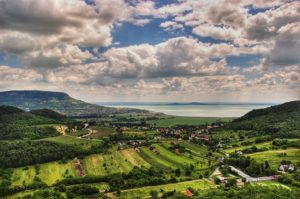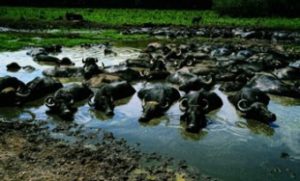Keszthely
The oldest city of the Balaton region is Keszthely. Her several streets still preserve the atmosphere of the last century’s small cities. One of the richest aristocratic families, the Festetics used to live in Keszthely’s and their presence was a most determinant factor of the city’s development and culture.
Their magnificent Baroque castle, today a museum, is one of the most beautiful monuments in the Balaton region. Permanent exhibitions: Aristocratic way of life; Weapons of 1100 years; Trophies of four continents; Rarities, valuable old curiosities (jewellery of the Hun princes, Lehel’s Horn, gold findings of the Avar Age. Every summer concerts are held weekly in its park, gorgeous habls. Balaton Museum is also beautiful, its dioramas and displays show the lake’s origin, fauna and flora, archaeological findings, folklore and the history of its bathing life. The nave of the Roman Catholic Church is a medieval relic, its frescos considered to be among the Hungarian Gothics’s most valuable works of art.
The city’s regular events are the Balaton Festival in summer and the Balaton Autumn.
Other sights:
Folk Costume Puppet Museum (History of Folk Wear and Peasant Architecture) – Waxwork Museum – Shell Parliament
Being the largest puppets museum in Europe, it boasts almost half a thousand porcelain puppets all beautifully dressed up in the folk costumes of different regions of Hungary.
Marzipan Museum and Confectioner’s
The museum can be found in the close vicinity of the Festetics Mansion. The front part of the scenic building is taken up by a cosy confectioner’s shop, where visitors can have cakes, pastries, ice-cream and coffee specialities, and there is also a rich selection of quite extraordinary marzipan desserts.
The marzipan figures sold there are all individually hand-made.
Behind the confectioner’s shop in the twenty showcases there are about one hundred ornamental works made of marzipan. They include the coats-of-arms of the Festetics family, Keszthely town, the cake presented to Mr Árpád Göncz, the first president to be elected after the change of 1989, which was presented to him by the town, and other miscellaneous folk art and fairy tale motifs and figures.















